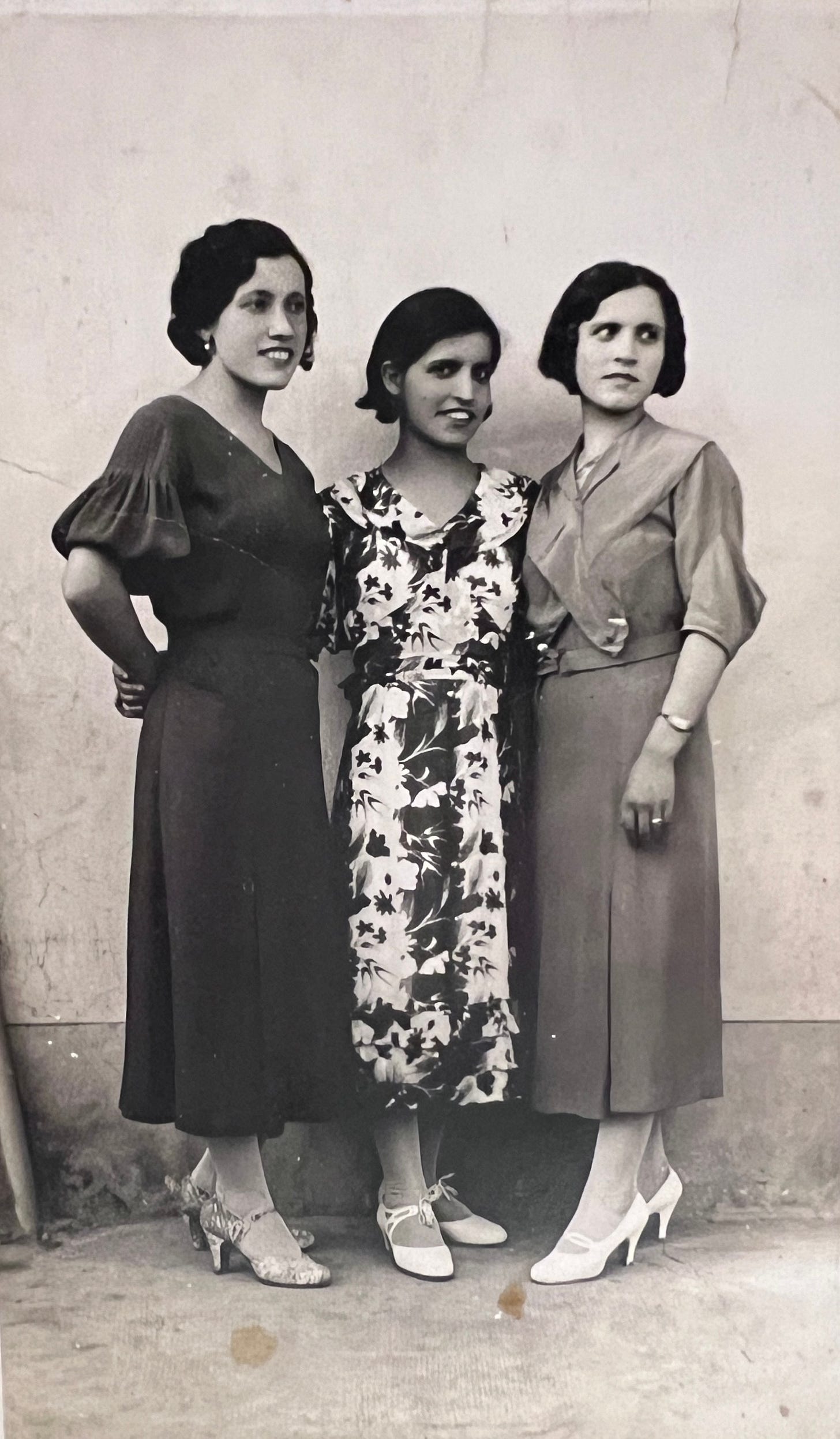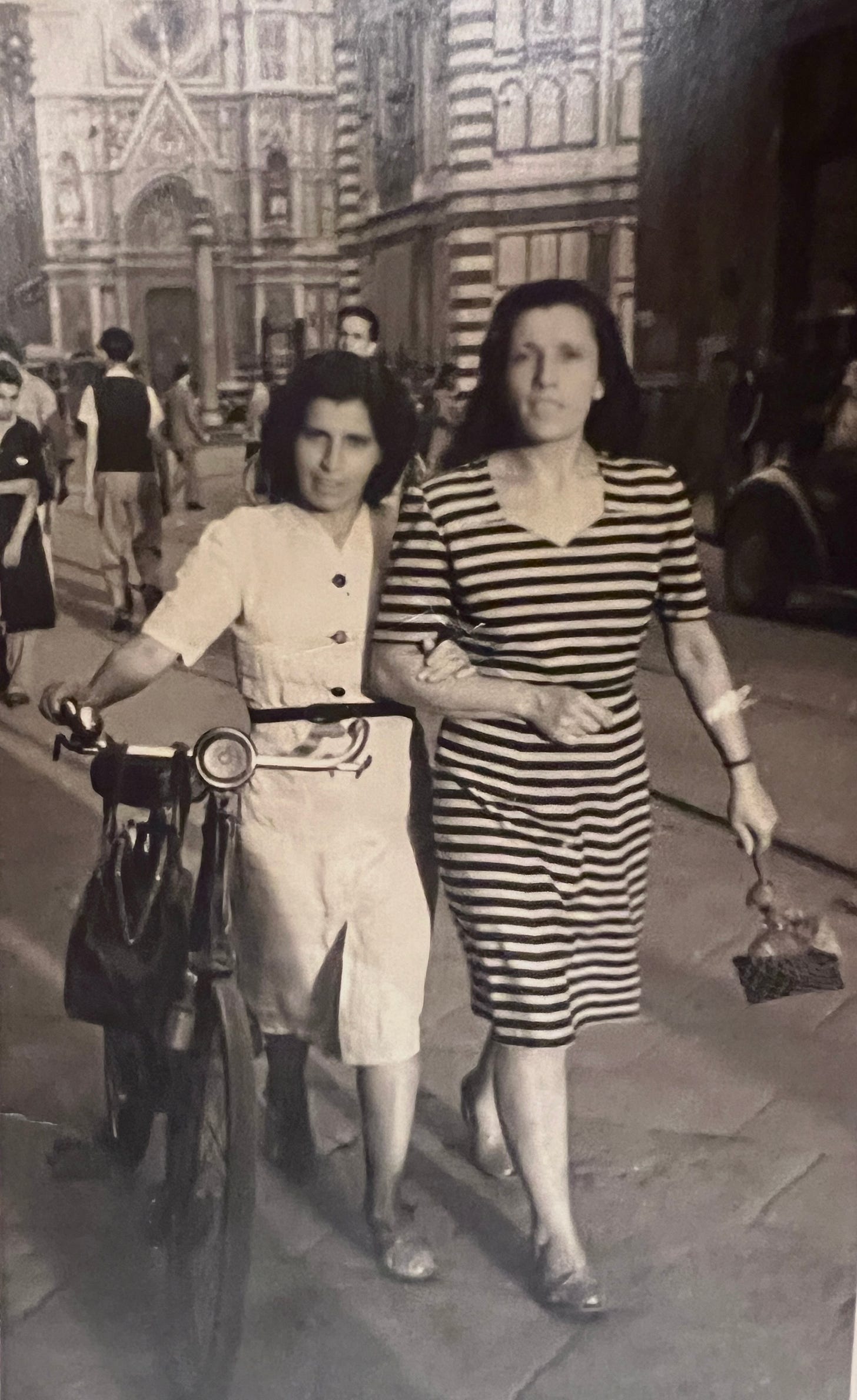Amici is part of my culinary memoir, Simply Divina. I want to introduce you to those who helped me learn how to be a Tuscan cook. You can read as many cookbooks and cooking magazines as you like, but cooking with someone in their kitchen, to me, you learn the secrets of the kitchen, often small touches, which are not written in books.
Getting inside a kitchen is a gift and a sign of trust and friendship. In Italy, language can be a problem; ingredients can have other names. Cooking with the seasons and regional ingredients can change an ingredient. Tasting while cooking, those illusive measurements from people who don’t use recipes make you a better cook.
Join me in sharing what I have learned from my mentors.
Ask any chef where the best food in town is, and they will always say at home: Mamma’s kitchen.
Tina Barchielli Francini- My Mother-in-Law
Tina was a powerhouse. She taught me so much. When I first met Andrea, I had rented a room from him in this massive apartment in downtown Florence with my friend Jan. The big joke is that I only paid one month’s rent as we fell in love quickly.
I was always shocked that Andrea took his laundry to his mom to be done. We had a washing machine; I offered to do the laundry. He informed me that if he didn’t take his laundry to his mom, she would think he didn’t love her. He would go one day to take it and have lunch, and a few days later ( no drier), he returned to pick up the laundry and have lunch with her again—a life lesson. In Italy, they talk about Mammismo, men having a solid attachment to their mothers. Wives often are jealous of that relationship. If he loved his mom, he was a good guy.
I am blessed to have married into a Florentine family. My husband’s mother was a fabulous, tough woman who outlived two husbands and raised two lovely men. Tina Barchielli lost her first husband during WWll; he was taken prisoner and died. Her second husband, Arturo, was the father of her children, Cesare, and my husband, Andrea.
Arturo worked at the main Mercato in Florence and brought home fruit and vegetables. Tina had no job when she was married but always helped in the neighborhood, shopping for others or giving people their shots. In Italy, the Dr prescribes your medicine, and you bring it home, and if you need a shot, you arrange for someone to come to your home to give it to you.
Women did small jobs to have some extra money and some financial independence.
Tina’s sister Vivetta moved to the town of Cecina on the Tuscan coast and opened a restaurant with her husband. Tina would take her kids and spend the summer helping her sister in the restaurant. The boys sold donuts made by Vivetta on the beach. I was also lucky to get a few recipes from Vivetta, her Cacciucco, like Cioppino soup and her delicious mushroom crostini.
When Tina married, she moved to the San Frediano area of Florence. It’s still one of my favorite neighborhoods in the Oltr’Arno area. It was a working-class area just outside the city's
medieval walls. It’s filled with small trattorias, wine bars, and artisan workshops.
Tina’s mantra was “spend more time shopping and less time cooking.”
She adored shopping at the local small shops. Each shop meant waiting in line to be served and catching up with her friends daily.
Macelleria- The butcher
Forno- the bread bakery
Ortolano- fresh fruit and vegetables
Her recipes were quick and easy. When her husband came home, he wanted his lunch on the table. Tina often spent so much time shopping with her girlfriends that she was late getting home. She cooked lunch and dinner for three men, with pasta, a main course, and vegetables for each meal. She would rush the cooking; something burnt or was not cooked properly, and he would leave the table and take a nap.
When you spend more time shopping, the trick is to organize cooking to get lunch on the table quickly.
Tricks from Tina:
Put the water on to boil for the pasta first; water takes a long time to boil.
While the water is coming to a boil, prepare the sauce and the rest of the meal.
A main course could be a simple thin slice of beef, chicken breast, or pork scallopine, which your butcher cut for you when you told him what you were preparing. A beef braciola in Florence is a thin slice of beef. When you prepare a multicourse meal, all the portions are smaller.
Buying precooked greens, spinach, chard, or broccoli rabe is one of the best services in Italy. They are already boiled, and you need to saute them with some garlic in olive oil. You can vary the flavors by adding chili pepper or serving with some lemon. Often, the baker had white beans already cooked in their ovens after they had made the bread. The beans are also served with the bean broth. It's an easy soup or side dish as well.
The true secret to the depth of flavor comes from not rushing the recipes. If I let the soffrito start burning, it gives that unique flavor. Often, Tina’s dishes burned a little, and when I want to make my husband feel like I am cooking like his mom, I am sure to let the soffritto burn a little, not just saute.
When I began teaching cooking, I worked with Syracuse University and their study abroad program here in Florence. I invited Tina to come and teach a class. She had never met any Americans. The only American she had ever seen was during the war when she ran into an Afro-American crossing the bridge who probably was looking for someone to wash his clothes. She had never seen a black person and ran away screaming.
She was so happy to meet this group of lovely kids and pass on her recipes. I will never forget how excited she was to cook with them. For them, it was like being at Nonna’s house.
I love sharing the delicious and simple recipes passed down to me by my mother-in-law. Some of her recipes are included in my book, which is available behind the paywall for all paid subscribers.
Tina’s recipes in the book include Chicken Liver Crostini, Minestrone, Baked Lasagna, Fried Chicken, Fried Artichokes, Sedano Rifatto (a dish from her village in Figline Val D'Arno), and Chocolate Salame.
I also made a video recipe for Sedano Rifatto from her hometown of Figline Val D'Arno. This recipe is similar to how cardoons are prepared, but celery is available all year round. It's traditionally made for a holiday called Perdono (Forgiveness) in the first week of September. The dish is sometimes called Rocchette or spools due to its small cylindrical shape. For more information, I've posted this on my website.
I am including more video lessons after the paywall. Think about signing up as a paid subscriber to learn more with me online.
Tales From My Tiny Tuscan Kitchen- Judy Witts Francini is a reader-supported publication. I am offering 20% discount on 1 year subscriptions ( offer ends February 14,2024)










